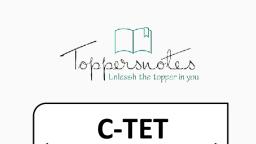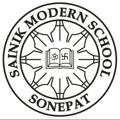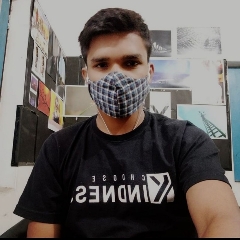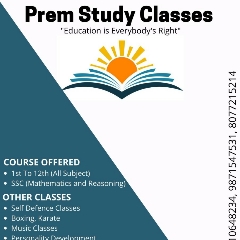Question 1 :
To construct a triangle similar to a given ABC with its sides $\cfrac{3}{7}$ of the corresponding sides of $\Delta$ ABC, first draw a ray BX such that $\angle$CBX is an acute angle and X lies on the opposite side of A with respect to BC. Then locate points $B_1, B_2, B_3,$ ... on BX at equal distances and next step is to join<br/>
Question 2 :
<p>If two similar triangles have a scale factor of $a:b$<em>,</em>then the ratio of their perimeters is <i>....</i></p>
Question 3 :
The perimeters of two similar triangles is in the ratio $3 : 4$. The sum of their areas is $75$ sq. cm. Find the area of each triangle in sq. cm.
Question 4 :
If two similar triangles have a scale factor of $a:b$, then the ratio of their areas is:
Question 5 :
In the construction of triangle similar and larger to a given triangle as per given scale factor m : n, the construction is possible only when :<br/>
Question 6 :
The tangents drawn at the ends of a diameter of a circle are ______.
Question 7 :
If angle between two radii of a circle is $130^{\circ}$, the angle between the tangents at the ends of the radii is :
Question 8 :
<img style='object-fit:contain' src='https://teachmint.storage.googleapis.com/question_assets/cbse_ncert/61b19b4f273b230584979976.PNG' />
According to the above figure, Is it TRUE or FALSE that BOA is a diameter of a circle and the tangent at a point P meets BA extended at T. If $\angle PBO = 30^{\circ}$, then $\angle PTA$ is equal to $30^{\circ}$?
Question 9 :
A line intersecting a circle in two points is called a _______.
Question 10 :
A tangent to a circle intersects it in how many point(s)?
Question 12 :
There cannot be more than two tangents to a circle parallel to a given secant.
Question 13 :
From a point A which is at a distance of 10 cm from the center O of a circle of radius 6 cm, the pair of tangents AB and AC to the circle are drawn. Then the area of Quadrilateral ABOC is: <br/>
Question 14 :
A tangent to a circle is a line that intersects the circle in only one point.
Question 15 :
The length of the tangents from a point A to a circle of radius $3$ cm is $4$ cm. The distance (in cm) of A from the center of the circle is:<br/>
Question 16 :
The common point of a tangent to a circle and the circle is called .....
Question 17 :
If the angle between two radii of a circle is $140^{\circ}$, then the angle between the tangents at the ends of the radii is :<br/>
Question 18 :
From a point P which is at a distance of 13 cm from the centre O of a circle of radius 5 cm, the pair of tangents PQ and PR to the circle are drawn. Then the area of the quadrilateral PQOR is<br><br>
Question 19 :
Lines are drawn through the point P(-2, -3) to meet the circle ${ x }^{ 2 }+{ y }^{ 2 }-2x-10y+1=0$. The length of the line segment PA.A being the point on the circle where the line meets the circle at coincident points, is
Question 20 :
Assertion: If length of a tangent from an external point to a circle is 8 cm, then length of the other tangent from the same point is 8 cm.
Reason: Length of the tangents drawn from an external point to a circle are equal.
Question 21 :
If P is a point on a circle with centre C, then the line drawn through P and perpendicular to CP is the tangent to the circle at the point P.
Question 22 :
The number of common tangents to the circles $x^{2}+y^{2}-4x-6y-12=0\ $ and $\ x^{^{2}}+y^{2}+6x+18y+26=0$, is:
Question 23 :
Three concentric circles of which the biggest is $\displaystyle x^{2}+y^{2}=1$ have their radii in A.P. with common difference $d (> 0)$. If the line $y =x + 1$ cuts all the circles in real distinct points, then<br>
Question 24 :
The point P is on circle $\displaystyle { x }^{ 2 }+{ y }^{ 2 }=36$ and tangents are drawn to the circle $\displaystyle { x }^{ 2 }+{ y }^{ 2 }=18$ from P. The angle between the tangent lines is<br/>
Question 25 :
State true or falseThe length of tangent from an external point P on a circle with centre O is always less than OP.
Question 27 :
The square of the length of the tangent from $\left( 3,-4 \right) $ to the circle ${ x }^{ 2 }+{ y }^{ 2 }-4x-6y+3=0$ is
Question 28 :
Draw a right triangle ABC in which BC = 12 cm, AB = 5 cm and ∠B = 90$^{\circ}$. Construct a triangle similar to it and of scale factor $\frac{2}{3}$. Is the new triangle also a right triangle?
Question 29 :
Draw a parallelogram ABCD in which BC = 5 cm, AB = 3 cm and ∠ABC = 60$^{\circ}$, divide it into triangles BCD and ABD by the diagonal BD. Construct the triangle BD' C' similar to ∆BDC with scale factor $\frac{4}{3}$ . Draw the line segment D'A' parallel to DA where A' lies on extended side BA. Is A'BC'D' a parallelogram?
Question 30 :
To divide a line segment AB in the ratio 5 : 6, draw a ray AX such that ∠BAX is an acute angle, then draw a ray BY parallel to AX and the points $A_1,A_2,A_3,.........$ and $B_1,B_2,B_3,.........$ are located at equal distances on ray AX and BY, respectively. Then the points joined are
Question 31 :
If an isosceles triangle ABC, in which AB = AC = 6 cm, is inscribed in a circle of radius 9 cm, what is the area of the triangle?
Question 32 :
Draw an equilateral triangle ABC of each side 4 cm. Construct a triangle similar to it and of scale factor $\frac{3}{5}$ . Is the new triangle also an equilateral?























